Succulent plants are unique in shape, size, design, color, and textures. They are easy to maintain indoors and outdoors. It adapts to the harsh climate as it does not require more water. A succulent is a perfect plant for the ones that do not have much time for gardening.
Succulent plants are full of juice or juicy when you break or tear stems or leaves. It has become popular around the World. There are 25 types of succulents with pictures and names.

What are Succulent Plants?
The Latin word Sucus makes the word Succulent. Sucus means juice or sap. They are fleshy and thick with water storage tissue, which conserves water to minimize water loss. Succulents store water in their leaves, stems, and roots, which helps them to survive in a dry, arid region.
Their appearance differs from species to species, with a common characteristic of water stored in their leaves, roots, or stems. It is native to dessert and low-water level regions.
There are many types of succulents found in more than 50 families. Two types of classification are named xerophytic and halophytic succulents. Xerophytics are the ones that are widely available and found in our garden, house, or office desk.
Succulents are easy to propagate when it comes to the propagation of other plants. Propagation means reproduction by cutting leaves or stems. You can propagate succulents in water and from stems and leaves.
How to Identify a Succulent
Most succulents share common traits:
- Thick or fleshy leaves/stems
- Compact or rosette-shaped growth
- Waxy or glossy surfaces
- Slow growth rate
- Tolerance to dry conditions
Top 10 Popular Identification Types of Succulent
1. Aloe Vera
- Identification: Upright rosette with thick, pointed, serrated leaves.
- Color: Green with white spots (young) or plain green (mature).
- Special Use: Known for skin healing and medicinal use.
2. Echeveria
- Identification: Rosette-shaped, symmetrical, fleshy leaves.
- Color: Shades of blue, lavender, green, pink.
- Perfect For: Containers and centerpieces.
3. Haworthia
- Identification: Small rosettes with white zebra-like stripes or raised spots.
- Texture: Bumpy or smooth, depending on the variety.
- Best Use: Indoor low-light spaces.
4. Jade Plant (Crassula ovata)
- Identification: Round, coin-like glossy green leaves.
- Growth: Shrubby or small tree over time.
- Also Called: Money plant (brings good luck).
5. Sedum
- Identification: Small, round or cylindrical leaves that may turn red in sun.
- Type: Ground cover or upright.
- Feature: Extremely hardy and low-maintenance.
6. Kalanchoe
- Identification: Broad leaves with scalloped edges and vibrant flowers.
- Colors: Bright red, orange, yellow, pink.
- Bonus: Blooms seasonally, perfect for home décor.
7. String of Pearls (Senecio rowleyanus)
- Identification: Bead-like, round leaves trailing on long stems.
- Use: Hanging baskets or cascading wall pots.
- Note: Needs bright, indirect light.
8. Agave
- Identification: Thick, sharp-edged sword-like leaves in a large rosette.
- Warning: Tips may be very sharp.
- Best For: Outdoor landscapes or large pots.
9. Zebra Plant (Haworthiopsis fasciata)
- Identification: Dark green pointed leaves with white horizontal stripes.
- Size: Compact, perfect for desktops and terrariums.
- Care: Prefers indirect light and minimal watering.
10. Burro’s Tail (Sedum morganianum)
- Identification: Trailing stems with teardrop-shaped, blue-green leaves.
- Care Tip: Handle gently; leaves break easily.
- Ideal For: Macramé hanging planters.
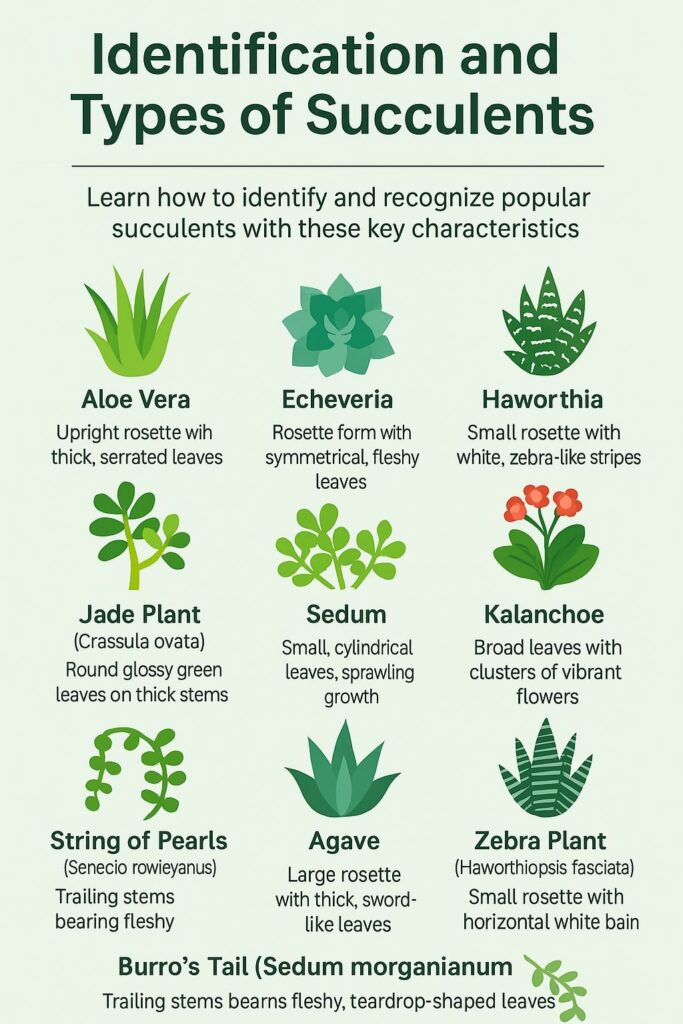
25 Types of Succulents with Pictures and Names
1. Burro Tail
Burro’s Tail (Sedum morganianum) or Donkey tail is a popular Succulent with a fat trailing stem, which is fleshy, tear-drop shaped leaves, blue-green or grey-blue. It grows up to 2 to 4 feet long in six years. This plant works well in bright sunlight.
Native: Honduras and Mexico.

2. Zebra Cactus (Haworthia fasciata)
Haworthia fasciata is also known as the Zebra Cactus, though it is not a cactus but a Succulent plants. It is a slow-growing plant that reaches a height of 4-8 inches. The Zebra effect comes with streaks of white tubercles on the green surface. Adrian Hardy Haworth is an entomologist and a botanist named genus Haworthia.
Native to African Continent
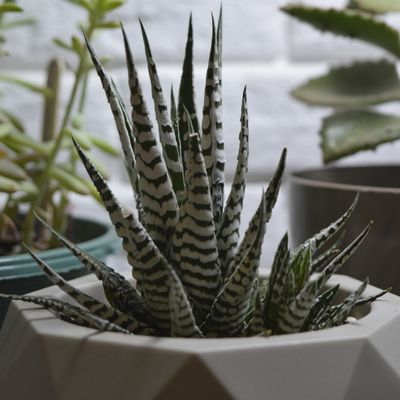
3. Aloe vera
Aloe vera is an easy-to-care types of Succulents in India species of the genus Aloe. It prefers bright sunlight and also prefers indirect light. Water them every 2-3 weeks to keep their thick leaves healthy. You can use it to treat sunburn, cuts, and daily skincare routines.
Native: Africa, Madagascar, and the Arabian Peninsula
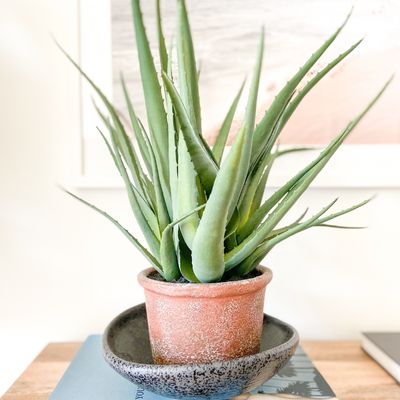
4. Crown of Thorns (Euphorbia milii)
Crown of thorns, Crown-of-thorns, Christ plant, and Christ thorn are the most common names, and the botanical name is Euphorbia milii. This plant blooms tiny slowers at the end of the spiky branches with long spoon-shaped leaves. Water them when the soil is dry and direct sunlight is needed.
Native: Madagascar
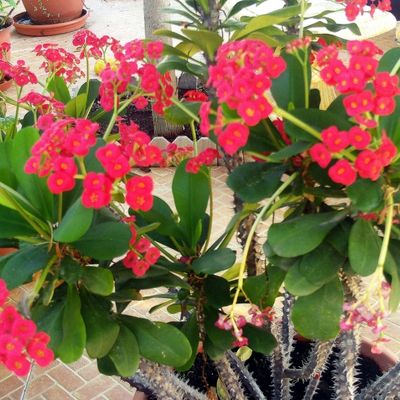
5. Hens-and-Chicks Succulent Plants
Hen and Chicks are also known as hen-and-chickens. It comes from the family of Sempervivum group of succulent plants. It grows in a group where the hen is the parent rosette, and the small rosette is the chicken. The pointed fleshy leaves grow close to the ground having leaves covering each other in a rosette.
Native: Southern Europe and Northern Africa
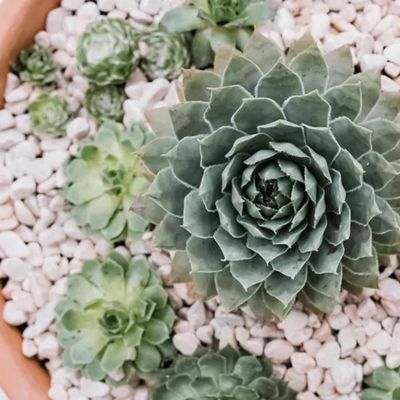
6. String of Bananas
Strings of banana is a succulent vine plant with banana-shaped leaves. The string of Bananas hails from the Asteraceae family and blooms white flowers. Long tendrils give a perfect look to your bookshelf, balcony, and office desk. The botanical name is Senecio radicans syn and Curio radicans. Bright or in direct sunlight in a humid environment works well.
Native: South Africa
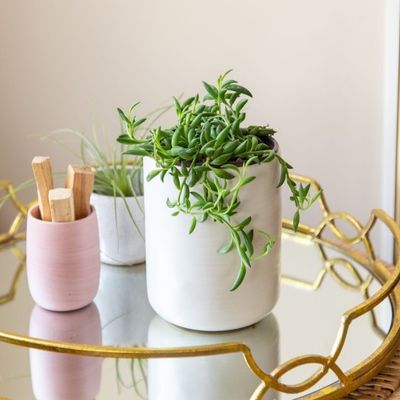
7. Lithops
Lithops is a small living stone or colorful pebble that grows very slowly and not more than 2-inch. Pebble plants, mimicry plants, and flowering stones are the most common names of this plant. The leave of this plant resembles the cleft in an animal foot.
Native: South Africa
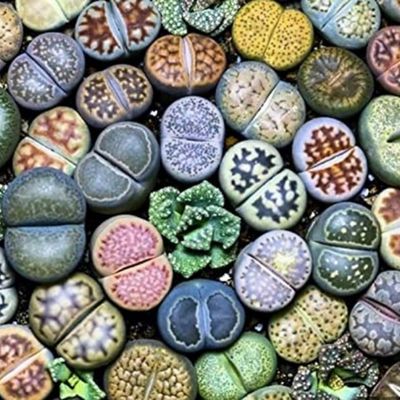
8. Christmas Cactus (Schlumbergera x buckleyi)
Christmas Cactus or Schlumbergera x buckleyi has a fleshy stem divided with a scalloped margin having a flat leaf. It blooms flowers at the end of the stem.
Native: South-Eastern Brazil
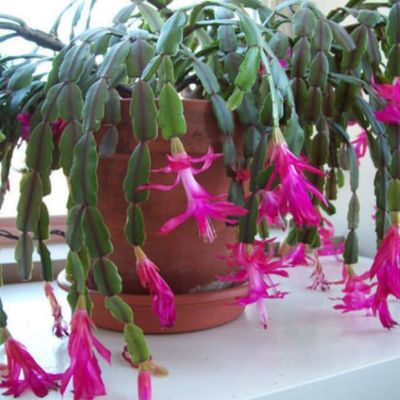
9. Snake Plant
Saint George’s sword, Mother-in-law tongue, and Viper’s Bowstring Hemp are the most common names of the Snake plant. Botanical name is Dracaena trifasciata (formerly Sansevieria trifasciata). It has sword-shaped leaves that grow upwards and almost resemble artificial foliage. Easy to care for plants and require less water to survive.
Native: Asia and Africa

10. String of Pearls
The sting of pearls is also known as Senecio rowleyanus and Curio rowleyanus. It is perfect for your balcony when you hang them. Make sure it gets six to eight hours of bright or indirect light every day. Also, protect them from direct sunlight to protect them from sunburn. Require water after two or three weeks, even when the weather is warm and mild. Once a month during winter.
Native: South Africa
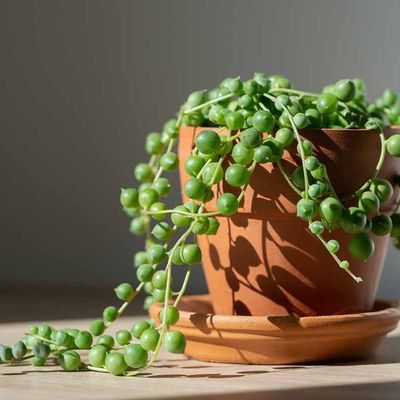
11. Panda Plant (Kalanchoe tomentosa)
Panda plants is a low-maintenance plant with furry and velvety leaves. It looks like cat ears, which makes them known as pussy ears. Botanical name is Kalanchoe Tomentosa. Their leaves are grey-green with rusty colors on the edges. These types of succulents bloom flower rarely when in indoor conditions. Grow up to two feet tall in their natural environment.
Native: Madagascar
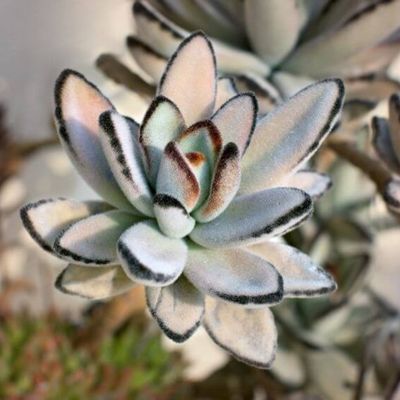
12. Kalanchoe blossfeldiana
Kalanchoe blossfeldiana is a flowering succulent plant from the crassulaceae family. It grows well in outdoor and indoor climates. Other names of Kalanchoe blossfeldiana are Widow’s-thrill, flaming Katy, Christmas kalanchoe, and florist kalanchoe. It blooms varieties of flowers like yellow, pink, orange, red, and white. Make sure to choose the potting mix soil and drainable pots. Require less water and allows water to dry before the next watering.
Native: Madagascar
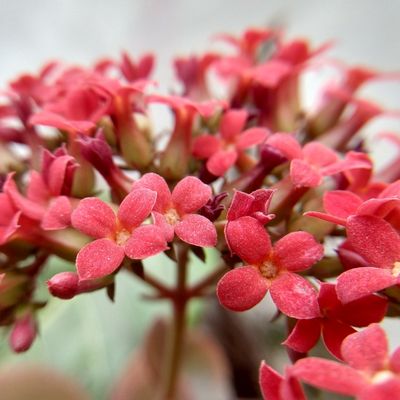
13. Pencil Cactus (Euphorbia tirucalli)
The pencil plant is a pencil most popular succulent houseplant. It grows upward in a candelabra pattern and survives in dry and freezing conditions. Branches of pencil plants at the early stage are smooth, green, and cylindrical, but with age, branches of this plant turn grey in color and rough like tree bark. Toxic milk sap yields when broken or torn. Botanical name is Euphorbia tirucalli.
Native: Africa
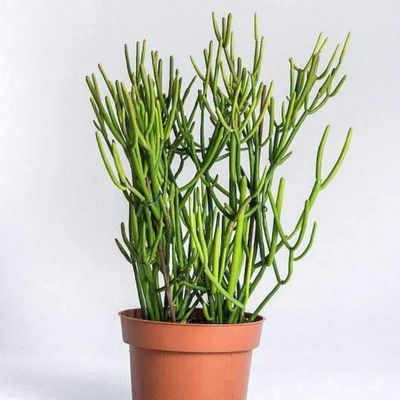
14. Haworthia
Haworthia is a small succulent plants with spiky leaves. Other names of Haworthia are zebra cactus, pearl plant, star window plant, and cushion aloe. It looks similar to Aloe vera. It requires water every two or three weeks if getting bright light every day and less water in lower sunlight.
Native: South Africa

15. Echeveria
Echeveria plants are beautiful in color and shape with striking rosette appearance. It grows in an array of different colors and shapes. Work completely best in bright sunlight and indirect sunlight. Require water in two to three weeks if in direct sunlight.
Native Country: Texas to Argentina
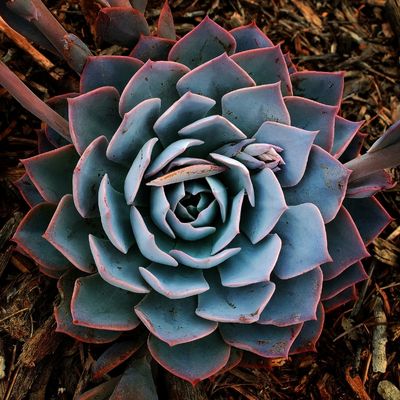
16. Jade Plant
Crassula is the scientific name of the Jade plant. It looks like a mini tree due to its thick trunk. Gardeners create jade bonsai, and it looks completely awesome. Require direct sunlight but not too much and indirect also. Water in every two to three weeks depending upon the soil dryness.
Native Country: South Africa
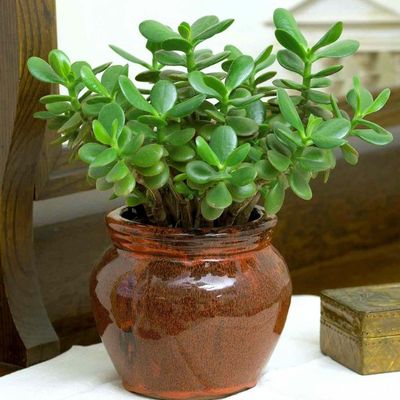
17. Zz Plant
Zz Plant or Zamioculcas zamiifolia common names are Zanzibar gem, Zuzu plant, aroid palm, eternity plant, and emerald palm. This plant has broad dark green leaves and is a perfect indoor plant. Keep away from direct sunlight and require indirect sunlight or bright light. Require water in two to three weeks.
Native Sunlight: East Africa, from Kenya to South Africa
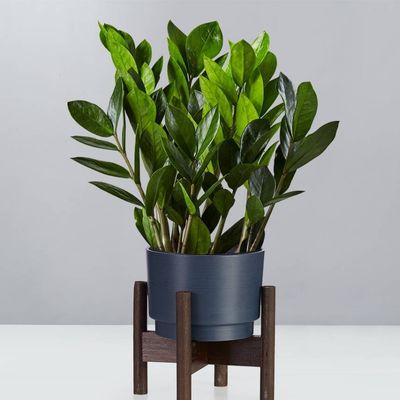
18. Hoya
Hoya plants have thick leave with long tendrils. It blooms flowers and sometimes produces unique fragrances. It is also known as the Wax plant. This plant is trickier when it comes to caring when compared to others. Require bright or indirect sunlight.
Native country: Philippines, India, Thailand, Malaysia, Vietnam, Bangladesh, Indonesia, Polynesia, New Guinea, and other varieties of species found in Australia
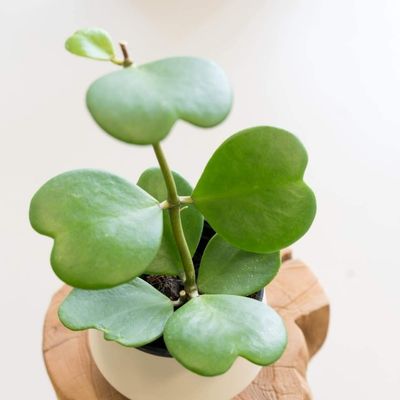
19. Peperomia
Peperomia has a heart shape with fleshy leaves. These are the common names of this plant Baby rubber plant, pepper elder, radiator plant, shining bush plant, and emerald ripper pepper. It is a low-maintenance succulent and requires water in two to three weeks. It blooms attractive white flowers.
Native Country: Northern South America and Central America
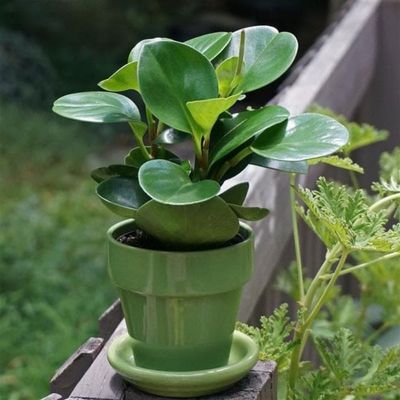
20. Kalanchoe
These succulent plants have more than 125 species. It grows perfectly well in direct sunlight and has eye-catching colored flowers. Water them when the soil looks dry. Easy to grow and care for this plant.
Native Country: Madagascar and tropical Africa

21. Dracaena
Dracaena is also known as Cordyline australis or cabbage palm. It grows indoors and outdoors and requires low to bright indirect sunlight. It grows tall with a woody stem and dark green leaves. When it grows outdoors, it blooms yellowish-white flowers.
Native country: Africa
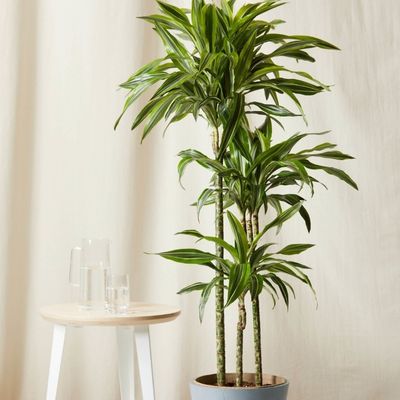
22. Gasteria
Gasteria looks like aloe succulent with thick and tongue-shaped leaves. It requires bright light but not too much. It is a slow-growing plant that requires less water.
Native Country: South Africa

23. Agave
Agave plants, also known as the century plant, have large leaves with prickly-edged and spiny tips. It grows up to 10 feet but is a slow-growing plant and requires less water. When mature, it blooms flower from the center with shades of white, yellow, and green.
Native Country: Mexico and the Caribbean

24. Ice Plant
Corpuscularia lehmannii Ice Plant belongs to the Aizoaceae family. It has fleshy grey-green leaves and grows up to 12 inches. It blooms yellow flowers in the spring and summer seasons. Survive in less water and water them when the soil is dry.
Native Country: South Africa
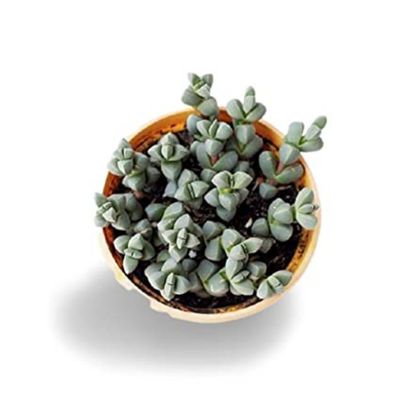
25. Moonstone Plant
Moonstone Plant is also known as Pachyphytum oviferum, and the Sugar Almond Plant. It requires lots of sunlight and less water. This plant has pastel color fatty leaves, is tightly packed, and looks like small eggs or almonds.
Native Country: Mexico

How Much Water Do Succulents Need?
The general truth about all the plants without water will perish. In a busy schedule, people forget to water the plants in one or two days gaps or every day to make them survive and flourish.
Succulents are the ones who do not need much water and care to grow. Water them when the soil is dry before the next watering. Always use well-drained soil so that water does not stay in the pot for longer, which means Succulents do not surround by wet soil all day long to prevent root rot.
How Often Do You Water Succulents?
1. Season
During Spring and Summer seasons, Succulents grow fast and consider the best growing period. You have to water them frequently during their growing season. Roots, stem and leaves absorb more water from the soil, so take time from your busy schedule and water them three times a day but check the sunlight and temperature. During winter, they go dormant and consume less water than in other seasons. Overwater during winter will kill them, so water them once or twice for the entire season.
2. Pot Size
Your container size or pot size tells you how much to water. If your pot is large, then overwatering plants kills them. So less water works well as it holds moisture longer. While small or shallow containers hold less moisture as the water drains out quickly.
3. Amount of Light
Generally, indoor plants require less water as compared to outdoor plants. If your Succulent gets ten or more hours of full sunlight, water them when you see dry soil than those that get less sunlight.
4. Humidity
Plants consume more water in the dry region. Living in a hot, arid, and dry place, water them frequently or in high humidity and cooler temperatures than water them less.
How to Take Care of Succulent Plants
Succulents are easy to care and in terms of many ways as compared to other plants. Just remember the below points to take care of Succulents.
1. Give them enough light
2. Rotate the pot
3. Season-wise watering
4. Choose the correct soil
5. Keep Succulents clean
6. Choose a container with a drainage
7. Bottom watering
Conclusion
These are the succulents with pictures identification types of succulents. Grow it in your garden today!
FAQs
What is the most popular succulent?
The most popular succulent is arguably the Echeveria, which is known for its rosette-shaped leaves and a wide variety of colors and textures.
How many types of succulent are there?
There are thousands of types of succulents, with new varieties being discovered and cultivated all the time. However, they can generally be classified into a few major categories based on their leaf shape, growth habits, and other characteristics.
How can I identify my succulent plant?
To identify your succulent plant, you can start by looking at its overall shape and size, the color and texture of its leaves, and any distinctive markings or features such as flowers or spines. Many online resources and guides can help you identify specific varieties based on their unique characteristics.
Read Next Blog:
7 Best Plants for Office as per Vastu